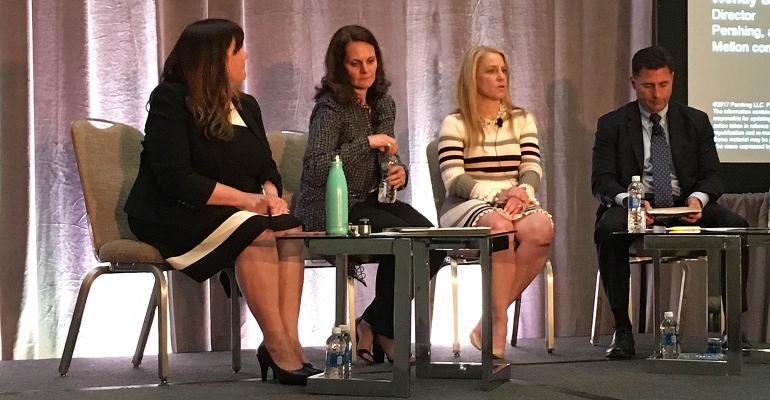The Financial Industry Regulatory Authority recently announced new proposals that would strengthen controls on high-risk brokers and require broker/dealers to heighten supervision of potential bad apples. Speaking at Pershing’s annual INSITE conference this week, Susan Axelrod, executive vice president of regulatory operations at FINRA, provided some hints as to how b/ds should be supervising high-risk brokers and what the regulator would be looking for.
“If we’re coming onsite asking about the supervision of a specific individual, looking at their blotter and asking about the hiring process, I think we all know that’s someone on our list,” Axelrod said.
Use this as a gauge: The regulator conducts some 1,600 cycle exams per year, meaning a firm will get a cycle exam every four years.
In 2014, FINRA created an algorithm that did an analysis of all 650,000 registered reps in the industry to create a risk ranking. The algorithm is now in its fourth iteration, she said. They’ve also created a dedicated examination and monitoring team specifically focused on these high-risk brokers. If appropriate, they’ll do an expedited review and, if appropriate, an expedited disciplinary action. They’ve barred folks from the industry in as quickly as eight days.
“Every incoming piece of intelligence is looked at to identify, could this potentially be a higher risk broker?” she said.
FINRA will not share its rankings with firms; their decision to bring on a certain rep is a business decision, Axelrod said. And, people are entitled to fairness and due process.
“If we’re just sharing our regulatory intelligence with firms, or putting it on our website, they may at the present time not be violating rules in any capacity,” she said.
Instead, firms should have “reasonable” procedures and supervision in place; she stressed the word “reasonable.”
“We’re not looking for firms to do their own risk ranking. We’re looking for firms to be on notice in a reasonable way of registered reps that have a heightened number of disclosures, customer impact disclosures and disciplinary actions.”
In terms of looking at the hiring process, if an examiner comes into a b/d’s office, they might ask about the firm’s vetting, due diligence, whether they looked at the person’s disclosures, who the broker’s customers are and what type of products they are selling.
FINRA plans to put out a regulatory notice around heightened supervision and current expectations.
They’re looking at the person’s disciplinary history, whether there is a pattern of complaints and the nature of those complaints.
“If someone sold auction-rate securities and had 25 complaints related to the single product and nothing else, we’ll view that differently,” she said.
“Perhaps — and this is not required — you may want to reach out to [customers] proactively, periodically, just to make sure that there [aren't] any complaints that aren’t being surfaced.
“There are so many good people in this industry,” she added. “Then there’s a smaller group that’s not trying to do the right thing. They pose risks to investors by being in that business. We need to focus our energy on that.”




